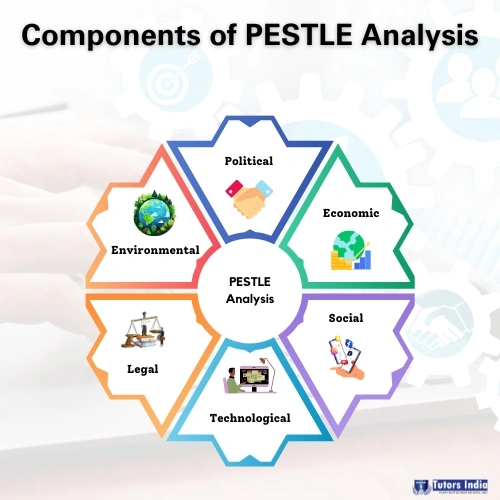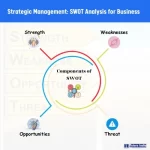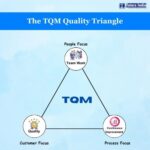Creating a Strategic Business Plan using PESTLE Analysis
Introduction
Strategic analysis is a key management approach that is effectively used within most modern organisations. Various models for strategic analysis exist, which are often adopted by management globally (Wolf, 2017). Typically, it has been considered as an approach adopted to formulate strategy; strategic planning comprises components such as
- Evaluation of the mandate of the organisation, values and mission,
- Analysing an organisation’s internal and external environment and
- Identifying strategic issues based on such analysis and developing strategies, plans and goals to tackle any issues (Arend, 2017).
When an organisation is keen to realise a preset goal, it is expected to formulate an effective strategy to achieve it. The strategy must establish priorities, fix time duration, allocate resources, formulate control mechanisms, and comprise guidelines for how every aspect will be tackled to reach a particular goal in the most appropriate manner. Though the organisation might be very reputed as having a skilled and committed team, the question here would be whether any strategies formulated might be useful. It’s quite simple: all organisations must conduct a PESTLE analysis (Goerge, 2019). SWOT and PESTLE analysis are among the most common analytical frameworks used in many businesses. These analyses are beneficial in strategic marketing.

Conducting a PESTLE Analysis
For those who are clueless, a PESTLE analysis essentially would refer to executing an audit of an organisation’s environment, which facilitates the planning process and helps arrive at a strategic decision. A PESTLE analysis can be considered an extension of the PEST analysis. It is understood that if an organisation can audit their present environment and evaluate probable changes, it will be in a better position than its competitors to respond to changes (Höglund, 2018). The analysis would determine the most probable events that might impact the organisation. Each of the factors from PESTLE – Political, Economic, Social, Technological, Legal, and Environmental- would impact the business plan. Examples of PESTLE analysis include the PESTLE analysis for Tesco, PESTLE analysis for Asda, PESTLE analysis for British Airways and PESTLE analysis for Ikea.
Political
This factor would present the manner and level to which the political environment of a region would impact the economy and some organisations. This might be at the local, state or national level. Existing considerations within the market that might influence the organisation would comprise factors such as a probable change in government, instability in the government owing to the balance of power, altering policies of business and superannuation, laws on tax, labour-related laws and trade limitations.
Economic
This factor would pertain to aspects that are distinct to the economy and directly impact the organisation. Factors that could influence the strategic plan of an organisation would comprise of rate of interest, rate of exchange, rate of inflation, prices of property and economic growth as well. Economic aspects would also refer to the economic factors of the organisation’s geographic area.
Social
This factor essentially comprises demographic factors, which would include population growth rate, gender and age distribution of the population, cultural facets and changes in social behaviours. For instance, lately, social media is being extensively utilised to discuss products and services. Several of these aspects might impact how organisations conduct their businesses with their customers and the techniques used for interacting with them.
Technological
The technological factor refers to the rapid changes in technology, technological research and development initiatives and automation. Such factors are instrumental in driving decisions for outsourcing, efficiency and quality considerations. For example, smartphones, location-based artificial intelligence, the emergence of location-based searching, Skype meetings or mobile internet. For the past three decades, the massive changes that have occurred in the domain of technology have hugely impacted all industry sectors and the speed and level at which this will occur only stand to show an upward trend.
Legal
Legal factors would pertain to every law directly linked to the organisation and its domain of activity. For instance, commercial law, laws on privacy, consumer protection laws, employment laws and laws against discrimination could certainly influence some aspects of an organisation.
Environmental
The environmental factor draws reference to every factor that is directly linked with, determined or influenced based on the natural environment where the organisation is located. This would comprise of weather and natural disasters, climate changes, geographical position and sustainability. For instance, if the location of the organisation is subject to extreme weather conditions, it would negatively impact the organisation.
Conclusion
All the above-said factors are intricately associated with the business, and it would do well for an organisation to carry out a PESTLE analysis. The analysis will help them understand their external environment and formulate strategies to tackle them while creating their business plan.
About Tutors India
We offer dissertation and coursework assistance to Master’s students specialising in multiple fields. We assist business management students with understanding various models for an organisation, which forms the basics for their assignments and dissertations. We also help formulate business plans for their dissertations. We also offer proofreading and editing services and ensure the coursework and dissertations are error- and plagiarism-free and comply with the university specifications.
To know how a business plan is written, check out our business plan example.
References
- Wolf, C., & Floyd, S. W. (2017). Strategic planning research: Toward a theory-driven agenda. Journal of Management, 43(6), 1754-1788.
- Arend, R. J., Zhao, Y. L., Song, M., & Im, S. (2017). Strategic planning as a complex and enabling managerial tool. Strategic Management Journal, 38(8), 1741-1752.
- George, R. M. Walker, and J. Monster, “Does Strategic Planning Improve Organisational Performance? A Meta‐Analysis,” Public Adm. Rev., vol. 79, no. 6, pp. 810–819, Nov. 2019.
- Linda Höglund, Mikael Holmgren Caicedo, Maria Mårtensson & Fredrik Svärdsten (2018) Strategic Management in the Public Sector: How Tools Enable and Constrain Strategy Making, International Public Management Journal, 21:5, 822-849.

 Previous Post
Previous Post Next Post
Next Post